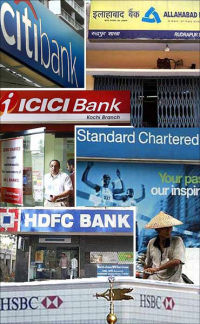 Rajiv Anand, Managing Director and CEO, Axis Mutual Fund, tells Masoom Gupte that stock markets have given attractive returns over the past 10 years, despite facing several bottlenecks. Edited excerpts:
Rajiv Anand, Managing Director and CEO, Axis Mutual Fund, tells Masoom Gupte that stock markets have given attractive returns over the past 10 years, despite facing several bottlenecks. Edited excerpts:Given that interest rates are on the rise, how do you see fixed income products doing?
The interest rate scenario will see some amount of bearishness. Hence, we recommend low duration short-term income funds or fixed maturity plans. Investors can assess the situation three-six months later and decide if the time is suitable to invest in long-term bond funds.
Should retail investors use the correction in the market to invest a lump sum or stick to systematic investment plans?
I would always recommend the SIP route for retail investors. It helps them get the volatility in the market to work for them, as well as take a disciplined approach to investing. Volatility in the Indian equity market has been around 25 per cent. So, SIPs will work better. Besides, timing the market is impossible and there is no way of predicting if the markets will correct further or move up.
Which themes are you betting on this year?
We are positive on banking, financial services, information technology and oil and gas. If India has to grow at 8.5 per cent, the core of your portfolio must be in banking.
The size of the banking industry and its penetration level as compared to China or Brazil is low. So, the big picture for the sector is strong.
Also, we are bullish
What are you underweight on?
It would be real estate and autos. In a rising interest rate scenario, real estate demand is expected to remain muted.
Further, debt on balance sheets of companies from this sector is a concern. On the other hand, autos will see good demand, but margin pressures will stay.
Where do you see equity markets heading?
It is difficult to predict the market movement in the near term. Concerns over inflation, rising interest rates and governance issues have not helped investor sentiment.
However, the long-term view continues to look good. We have hit the magical number of $1,000 per capita income, which according to several studies is the inflection point with regard to consumption in any economy.
It will continue to climb rapidly and drive the consumption story. Infrastructure spending is also expected to be strong, which will further accelerate demand and improve productivity as well.
Long-term investors must accept that there are several bottlenecks in our country. But despite these, our markets have given attractive returns over the last 10 years. And, the next decade should not be any different.











 © 2025
© 2025